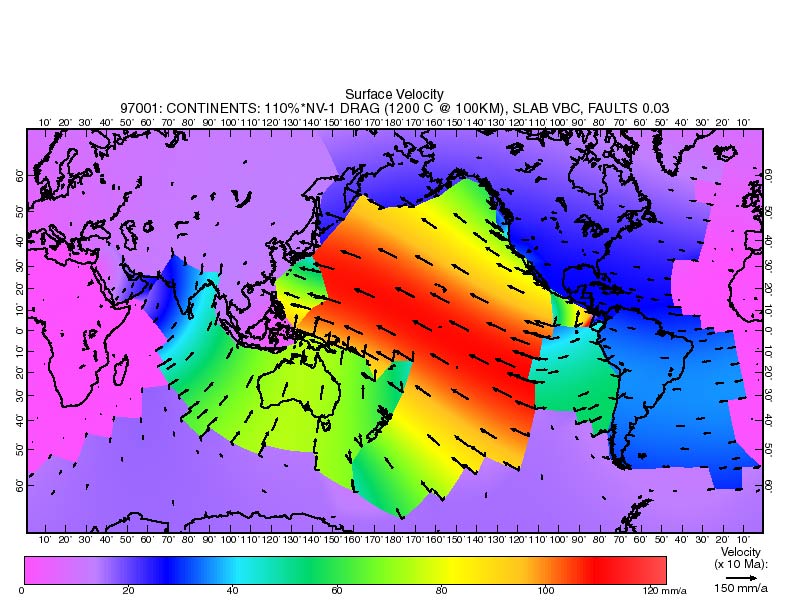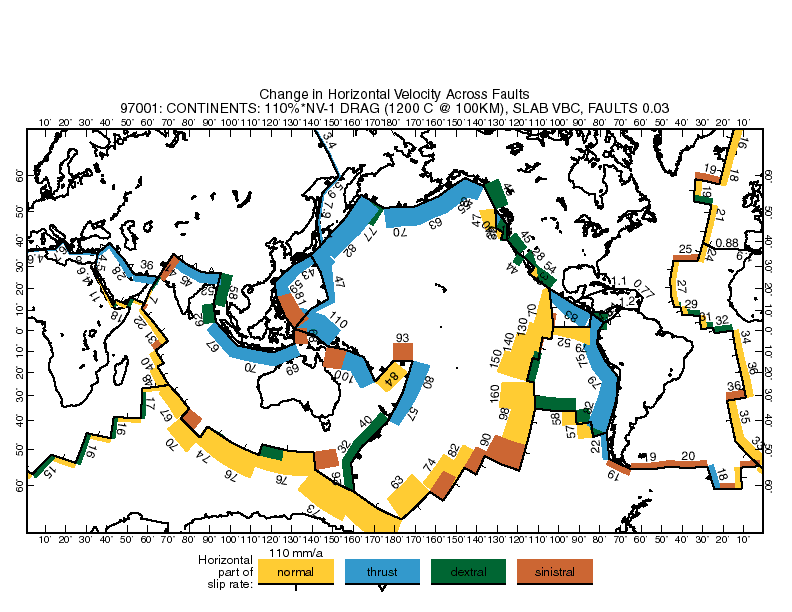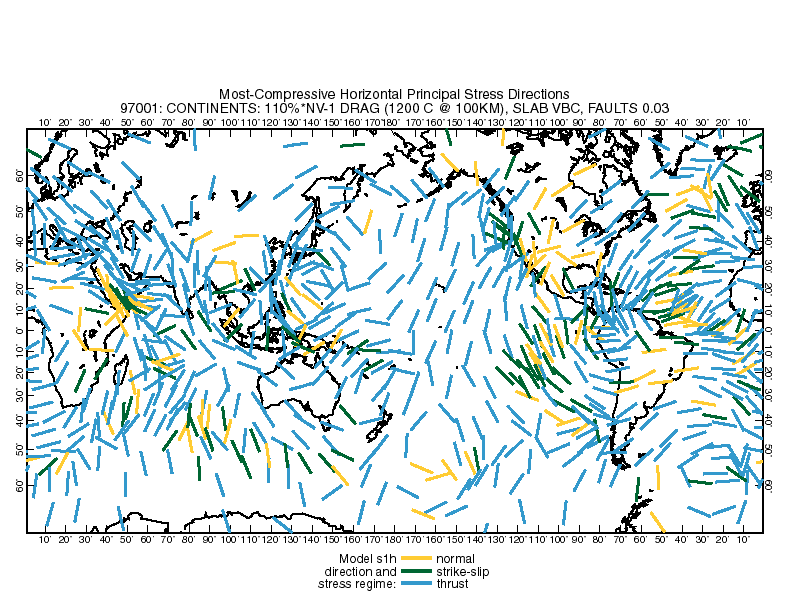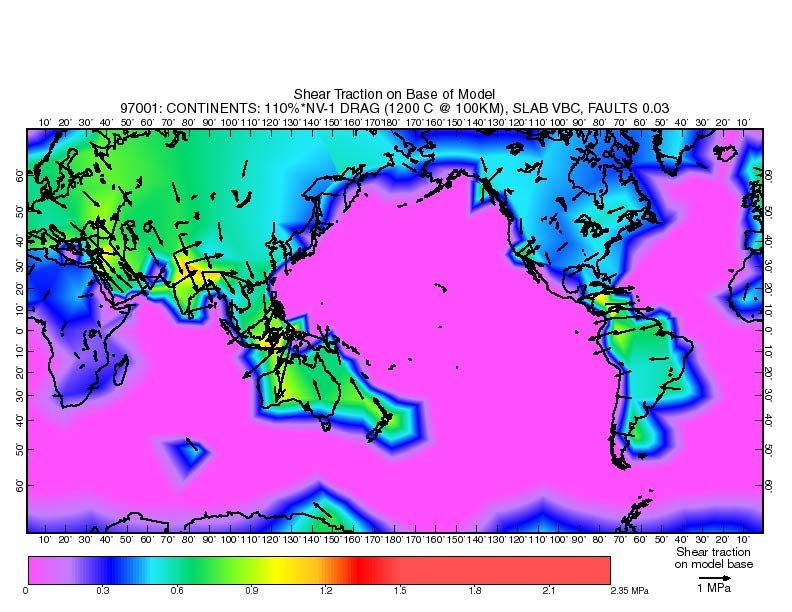
39. Bird, P. (1998a) Testing hypotheses on plate-driving mechanisms with global lithosphere models including topography, thermal structure, and faults, J. Geophys. Res., 103, B5, 10,115-10,129.
Abstract. A popular concept of plate tectonics is that the most important density anomalies are in oceanic plates, which descend from rise to trench while subducting slabs act as velocity regulators and the drag on the base of the lithosphere is resistive. This hypothesis has been shown to be consistent with velocities of rigid plates and to approximately predict stress directions in a global elastic shell. Here I test whether the hypothesis leads to correct plate velocities and stress directions in models of laterally heterogeneous plates of nonlinear rheology separated by faults with low friction. All models have bottom boundary conditions based on simple shear in an olivine asthenosphere extending to the transition zone, where various patterns of lower mantle flow are assumed. These models show that topography alone is not sufficient to drive plate motion at actual rates over a static or sluggish transition zone. If the forward component of velocity of each subducting slab is also imposed, then velocities are improved, but errors in stress direction become unacceptable. Better models are found by assuming that at least some parts of the transition zone have velocities greater than surface velocities, leading to active or forward basal drag. In the most plausible model, this forward drag acts only on continents, while oceanic lithosphere experiences negligible basal shear tractions. Probably the dense descending slabs of oceanic lithosphere not only pull the oceanic plates, but also stir the more viscous lower mantle, and this in turn helps to drive the slower drift of continents.



